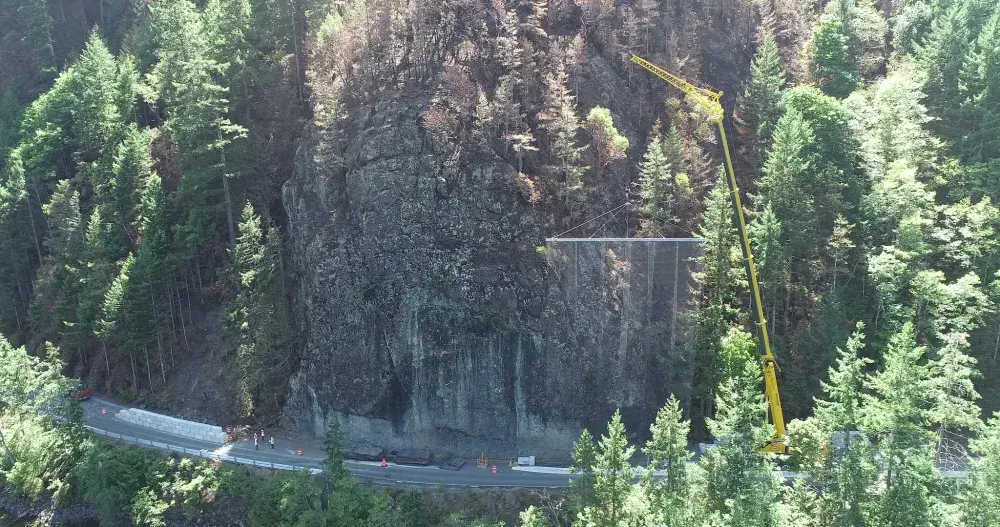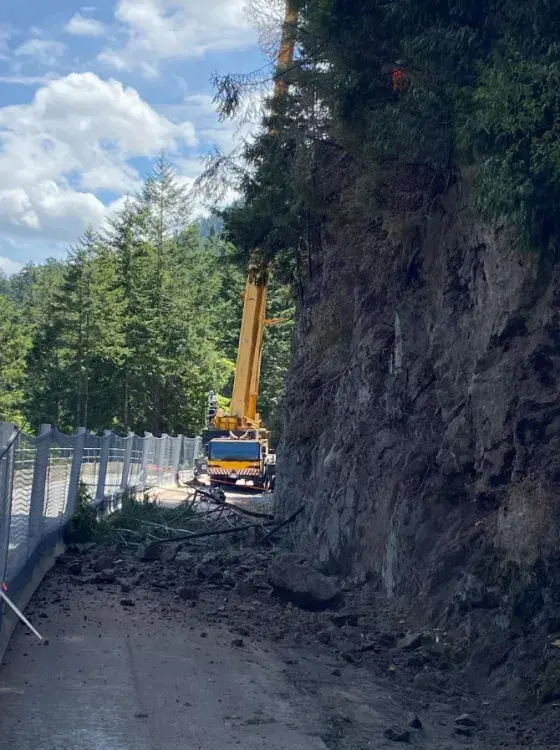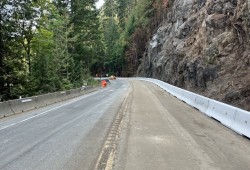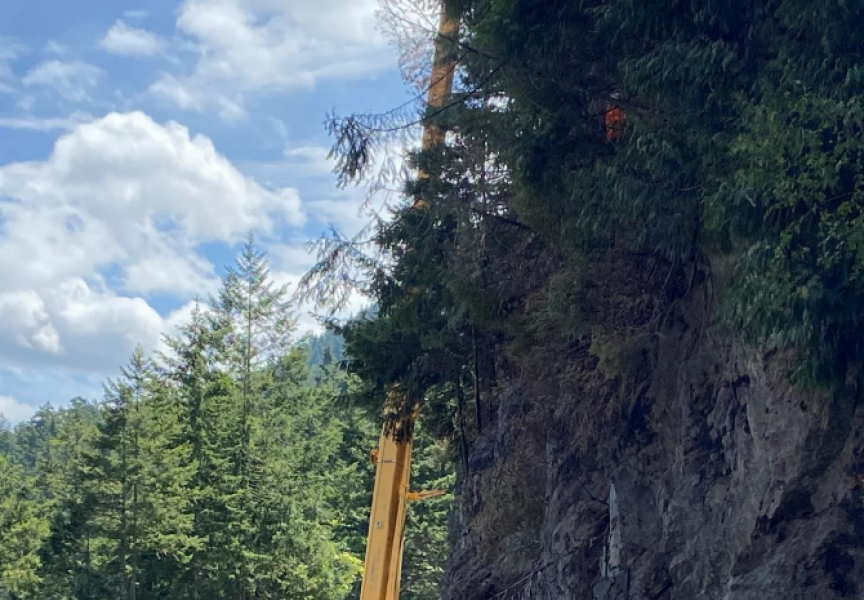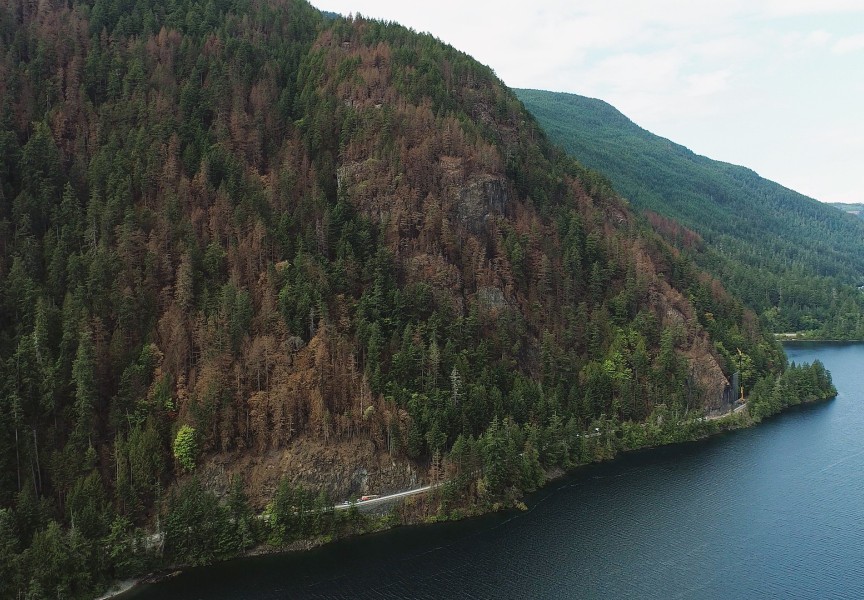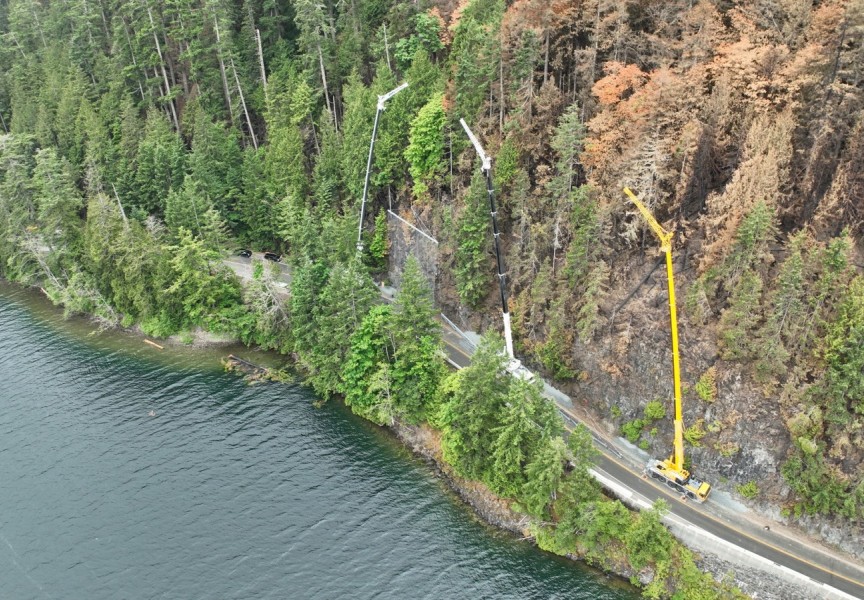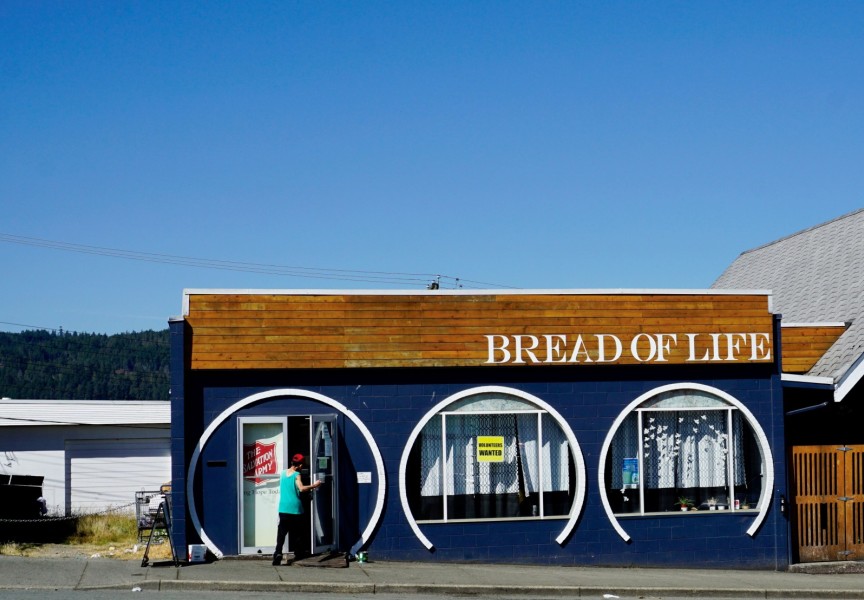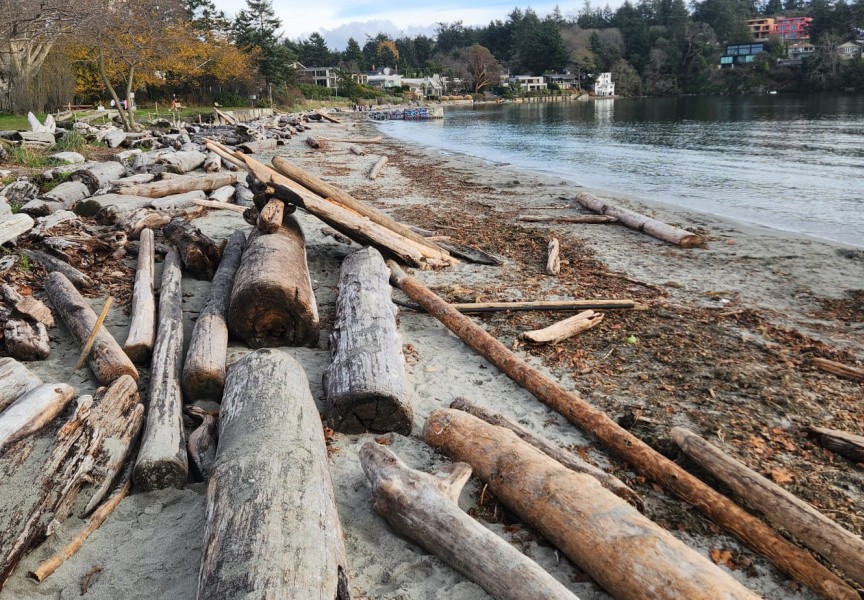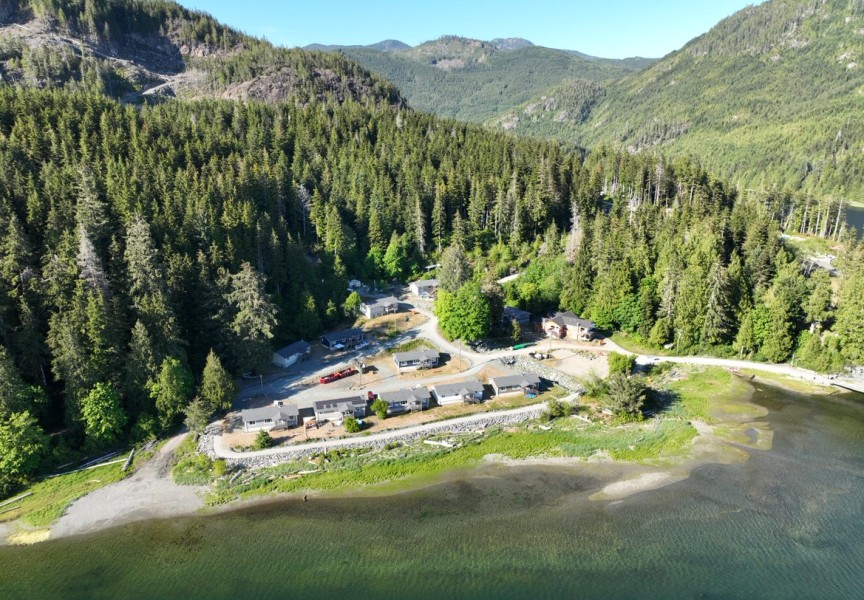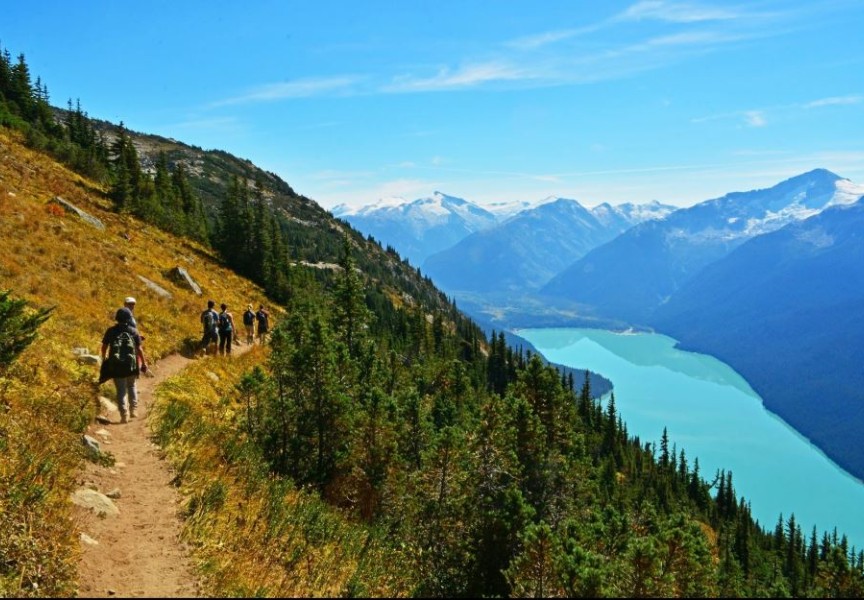As Vancouver Island’s west coast sees heavier rainfall, Highway 4 could face possible road closures, though “anticipated to be much less” after the Cameron Lake Recovery Project safety measures were implemented through the summer, says the Ministry of Transportation and Infrastructure.
In early June the Cameron Bluffs wildfire sparked, leading to the closure of Highway 4 as the Cameron Lake Recovery Project began work towards slope stability to ensure safety for vehicles traveling along the highway.
With a full re-opening to two-way traffic at the end of August, community members remain concerned of the slope stability of the bluffs as the rainy season arrives and Highway 4 remains the only road passageay in and out of many west coast communities.
During the recovery project, roughly 250 dangerous trees and 1,000 tonnes of rock material were removed from the bluffs, while 15 rock bolts, roadside barriers, rock catchment fencing and a weather station were installed.
According to the Ministry of Transportation and Infrastructure, although it’s possible Highway 4could be closed this fall and winter due to debris fall, the work from the recovery project has reduced the “risk, frequency, and unpredictability”.
“We understand people’s concerns about the potential challenges with this route during unfavorable weather,” wrote the Ministry of Transportation in an email to Ha-Shilth-Sa. “The ministry has developed an operational plan for the highway [in] the fall/winter which includes enhanced monitoring with forecasted weather, advanced communications ahead of major weather events and alerting travelers and the surrounding communities of planned or potential unplanned closures to help people prepare.”
“The safety work completed this summer, in addition to reducing the immediate risk of rock fall in the wake of the fire, has also served to reduce the risk of rock and debris fall when the weather transitions into fall and winter conditions,” the Ministry wrote.
On a slope that has recently been rock scaled, it is common to see small debris and rockfall, wrote the ministry. They expect this to occur in the first few rainfall events.
“The new roadside barrier with rock catchment fencing acts as a safety measure to address this,” the ministry wrote. “The ministry may need to close the highway for a short duration for monitoring if staff see significant materials coming down.”
Judith Sayers, Nuu-chah-nulth Tribal Council president, hopes that if a road closure occurs this winter, that it won’t be as long as the initial shut down in June. She reflected on the medical, economic and social impacts the closure and single-lane-alternating traffic had on the west coast communities.
“I know they've done a lot of work,” said Sayers. “Of course, you just can’t say that there won’t be more debris falling down.”
Sayers explained that throughout the summer the Ministry of Transportation and Infrastructure and Mid Island-Pacific Rim MLA Josie Osborne kept local leaders informed on the recovery project, including addressing concerns and providing photos of the work they were doing.
“They are carefully monitoring,” said Sayers. “They have staff out there in case they have to shut down the highway and it could be done really quickly so that no one gets hurt.”
In a board meeting on June 14, shortly after the initial closure of the highway, the Alberni-Clayoquot Regional District (ACRD), alongside First Nations and member municipalities, came together to discuss options amid the impacts of the Cameron Bluff wildfire, directing the ACRD staff to establish a Transportation Advisory Committee.
In the ACRD Board of Directors meeting on Oct. 11, a resolution was passed to request the “Provincial government declare an emergency route through Horne Lake and that the Alberni-Clayoquot Regional District Transportation Committee review all access routes for the long term,” wrote Wendy Thomson, general manager of Administrative Services for the ACRD, in an email to Ha-Shilth-Sa.
Though community members of Port Alberni have long advocated for an alternative highway route in and out of the west coast, in 2016 the Ministry of Transportation announced it was “not financially feasible” to build an alternate passage after reviewing the Horne Lake Connector Business Case.
“We definitely need an alternate route in case there is a natural disaster and we need to get people out,” said Sayers.
“This is really critical to Port Alberni, Ucluelet, and Tofino,” she added. “The livelihoods, food sources, water sources, gas, medical, you name it.”
“We can't just leave it to chance that things will be okay on Highway 4 when we know that it’s a possibility it may not be,” said Sayers.

